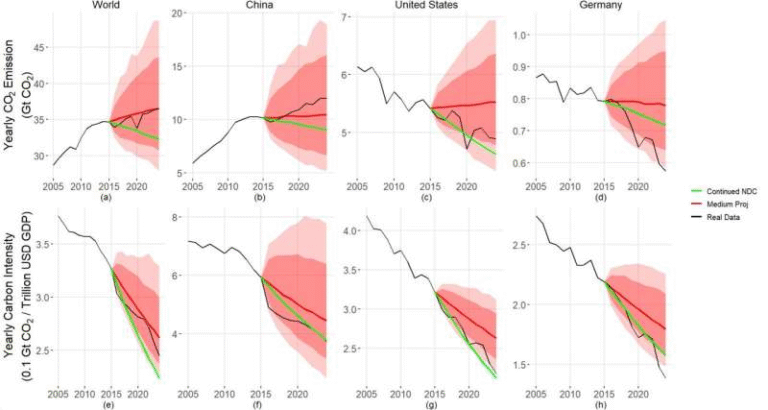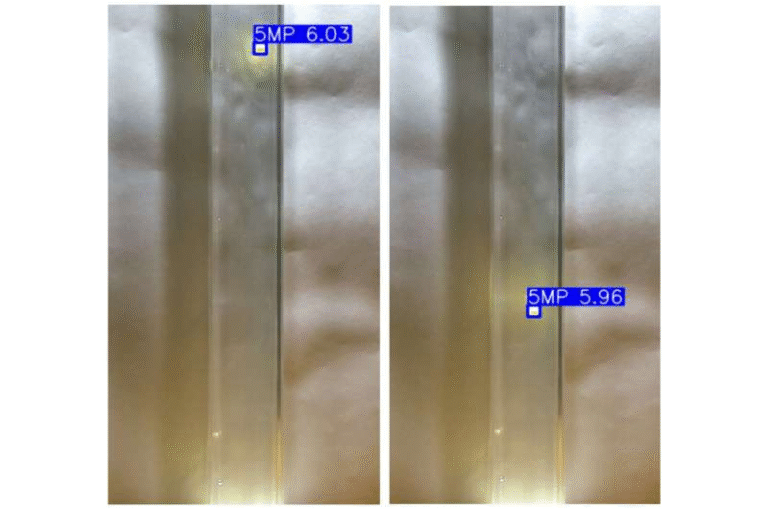New Research Reveals Why Most Microbe-Produced Nitrous Oxide in the Black Sea Never Reaches the Surface

The Black Sea has always been an intriguing marine environment, but a new scientific study has pushed that curiosity even further. Researchers from the Max Planck Institute for Marine Microbiology have taken a close look at how nitrous oxide (N₂O) — a powerful greenhouse gas — behaves in the world’s largest anoxic (oxygen-free) marine basin. What they found is both surprising and incredibly important for understanding our changing climate.
This article breaks down every key detail from the new research and also expands on important background information about nitrous oxide, anoxic oceans, and microbial processes so you can get a complete picture of why this finding matters.
What Scientists Wanted to Understand
N₂O is a major climate-warming gas and also a strong ozone-depleting substance. Oceans naturally release N₂O into the atmosphere, especially in regions where oxygen is scarce. That’s because microbes living in low-oxygen waters tend to produce nitrous oxide during nitrogen-cycling processes.
The Black Sea is practically the ideal place for this to happen:
- It has a thick layer of oxygen-depleted water starting around 150 meters deep.
- Beneath that lies over 2,000 meters of anoxic, sulfidic water.
- These conditions should, in theory, create large and persistent amounts of nitrous oxide.
Yet strangely, the Black Sea releases only very small amounts of N₂O into the atmosphere.
This puzzling mismatch — lots of production potential but little emission — is what scientists call the “Black Sea nitrous oxide conundrum.”
The new research set out to find the exact explanation.
How the Research Was Conducted
To investigate, the team boarded the research vessel RV Poseidon and sailed to the western Black Sea. Their goal was to map environmental conditions and perform controlled experiments on freshly collected water samples from different depths.
They used a CTD rosette system, a device that allows precise measurement of conductivity, temperature, depth, and also collects water at specific layers. This tool is essential for studying complex, layered systems like the Black Sea.
Once they had the samples, the scientists monitored:
- How much nitrous oxide various microorganisms produced
- How quickly other microorganisms consumed the nitrous oxide
- Which microbial groups were responsible for each step
- How chemical conditions such as oxygen, ammonia, and nitrite availability influenced N₂O cycling
Their results provide one of the clearest pictures yet of how this greenhouse gas behaves in an oxygen-limited marine environment.
What the Researchers Discovered
1. The Suboxic Zone Is the Hotspot for N₂O Activity
The suboxic zone — the transition layer between oxygenated surface water and deep anoxic water — turned out to be where most of the action happens.
In this layer, oxygen levels are extremely low but not entirely absent. This creates a sweet spot enabling both production and consumption of N₂O.
2. Microbes Produce N₂O in Multiple Ways
The team observed substantial potential for nitrous oxide creation. Two major processes were responsible:
- Ammonia oxidation (also known as nitrification)
- Produced persistent but low amounts of N₂O.
- Dominant microbes: Nitrososphaerales, a group of ammonia-oxidizing archaea.
- Production rate: up to 0.2 nmol N L⁻¹ day⁻¹.
- Denitrification
- Sometimes generated very high pulses of N₂O.
- Carried out by various bacteria, including Alpha- and Gammaproteobacteria.
- Production rate in some experiments: up to 20 nmol N L⁻¹ day⁻¹.
These findings confirm that the Black Sea has significant potential to generate N₂O — exactly what scientists suspected.
3. N₂O Reduction Outpaces Its Production
Here’s the critical discovery:
Microorganisms that consume nitrous oxide completely dominate over those that produce it.
In the same suboxic layer where N₂O is created, another group of microbes rapidly converts it into harmless dinitrogen gas (N₂).
- Reduction rate: up to 24 nmol N L⁻¹ day⁻¹ — higher than the highest observed production rate.
The organisms responsible for this filtering effect include:
- Certain chemolithotrophic Gammaproteobacteria
- Microbes belonging to Marinisomatia
- Other bacteria carrying the nosZ gene, essential for N₂O-to-N₂ conversion
This explains why almost no nitrous oxide ever escapes into the atmosphere: it is being neutralized almost as fast as it forms.
Why This Matters for Climate Science
Nitrous oxide is the third most abundant greenhouse gas, and molecule-for-molecule it is far more potent than carbon dioxide. It also remains in the atmosphere for around 120 years.
Since oceans contribute a large share of natural N₂O emissions, understanding how marine N₂O cycles work is crucial for accurate climate predictions.
This study highlights that:
- The Black Sea acts as a biological filter, preventing massive N₂O release.
- Such microbial filtering might exist in other low-oxygen regions of the ocean.
- Global models may underestimate the importance of N₂O-consuming microbes.
- As the ocean loses more oxygen due to climate change, nitrous oxide dynamics could shift dramatically.
If oxygen-depleted waters expand — and many scientists expect they will — conditions that favor N₂O production could increase. Whether N₂O-consuming microbes can keep up under future conditions remains uncertain.
Additional Background: Understanding Nitrous Oxide in the Ocean
To appreciate the significance of this study, it helps to know how N₂O behaves in marine systems.
How N₂O Is Normally Produced in the Ocean
Two major pathways dominate:
- Nitrification
Ammonia → nitrite → nitrate
During this process, microorganisms may accidentally release N₂O, especially in low oxygen conditions. - Denitrification
Nitrate → nitrite → nitric oxide → N₂O → N₂
This process intentionally produces N₂O as an intermediate step.
In oxygen-poor waters, both pathways become more active — which is why regions like the Black Sea are expected to be N₂O hotspots.
Why the Black Sea Is Unique
The Black Sea has a stable, layered structure due to limited mixing with surrounding waters. Features include:
- A thin oxygenated surface layer
- A sharp suboxic transition zone
- A huge, permanent anoxic water mass below
- High levels of hydrogen sulfide in deep waters, preventing oxygen penetration
- Limited water exchange with the Mediterranean, keeping the system chemically stable
This makes the Black Sea a natural laboratory for studying oxygen-limited microbial processes — including N₂O cycling.
The Role of Microbes in Regulating Greenhouse Gases
Microbes are responsible for nearly all N₂O production in the ocean, but they are also responsible for its removal.
The key enzyme for removing N₂O is produced by organisms that carry the nosZ gene. These organisms convert N₂O into N₂, which makes up most of Earth’s atmosphere and is environmentally harmless.
Understanding how widespread nosZ-carrying microbes are — and how active they are — is one of the biggest challenges in climate-focused marine microbiology.
This new research provides valuable new data for that effort.
What Comes Next
The Max Planck research team is now expanding their work to other oxygen-limited regions around the world. By comparing very different environments, they hope to create a more complete global picture of N₂O cycling.
This is especially important because:
- Climate change is accelerating ocean deoxygenation.
- More low-oxygen zones likely mean more N₂O production.
- Whether microbial communities can counterbalance that increase remains unknown.
A better understanding of these microbial processes will help scientists refine global greenhouse-gas models and predict how ocean-derived N₂O emissions will change in the coming decades.
Research Paper:
Nitrous oxide turnover in the suboxic zone of the Black Sea
https://doi.org/10.1002/lno.70182





